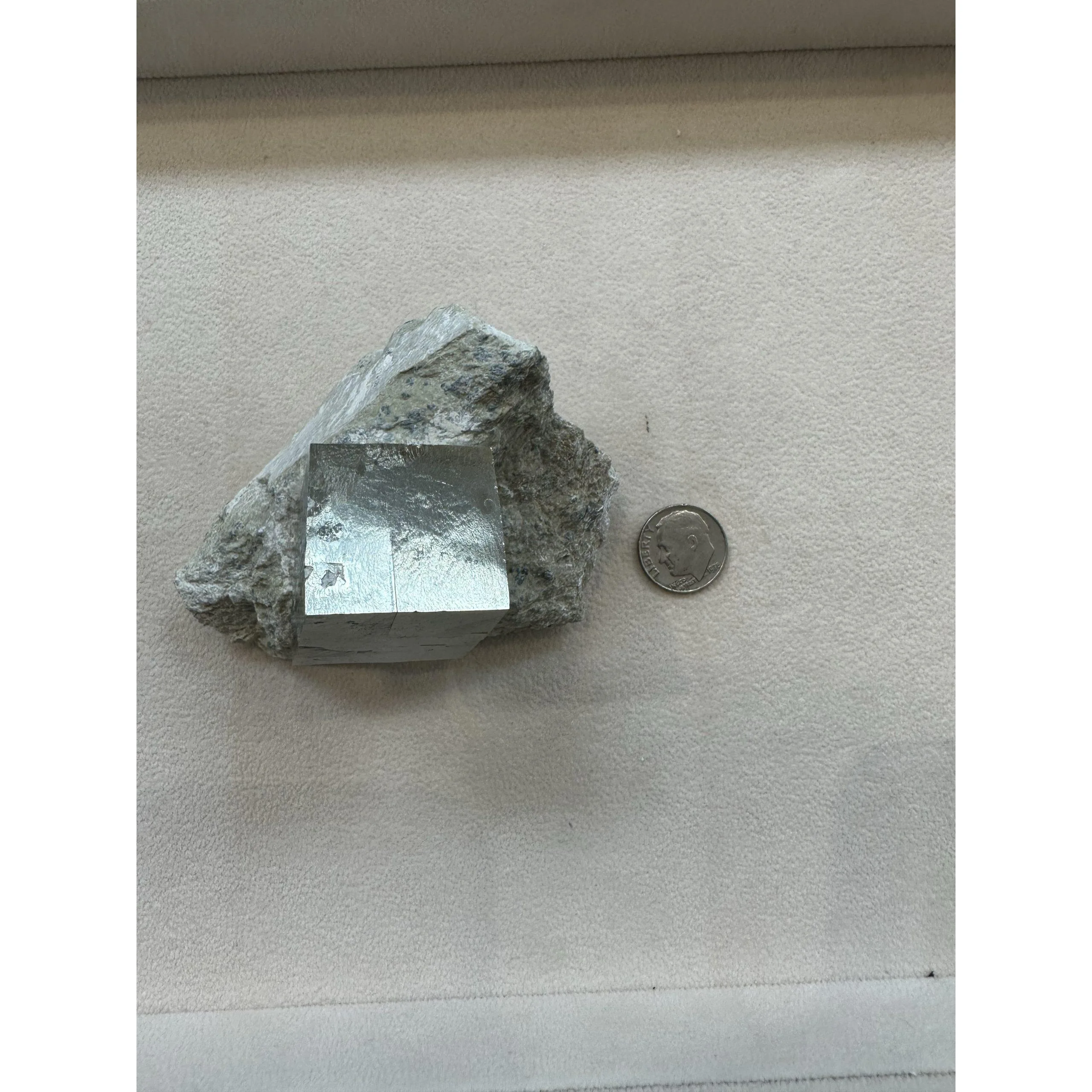Pyrite Cluster, fool’s gold can be found all around the world. Peru is known for it’s collectible specimens.
The mineral pyrite, or iron pyrite, also known as fool’s gold, is an iron sulfide with the chemical formula FeS₂. Pyrite is the most abundant sulfide mineral. Pyrite’s metallic luster and pale brass-yellow hue give it a superficial resemblance to gold, hence the well-known nickname of fool’s gold.




















